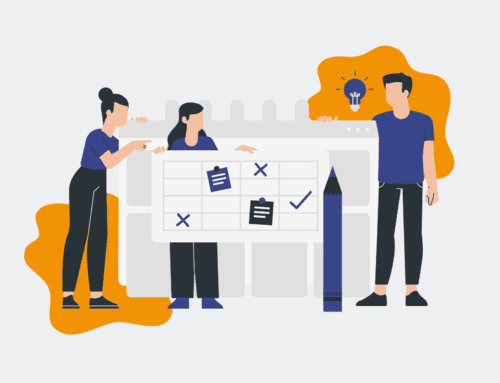Optimizing Resumes for AI Parsers: A Candidate’s Guide
In today’s hyper-competitive job market, the path from applicant to interview isn’t always linear. For many candidates, the first gatekeeper isn’t a human recruiter, but an artificial intelligence. As businesses, especially those leveraging advanced talent acquisition strategies like those we implement at 4Spot Consulting, strive for unparalleled efficiency, AI-powered resume parsing has become an indispensable tool. Understanding how these sophisticated systems evaluate your resume is no longer an advantage—it’s a necessity. This guide will help you navigate the nuances of crafting a resume that doesn’t just impress human eyes, but speaks directly to the algorithms designed to streamline the hiring process.
The Rise of AI in Recruitment: Why Your Resume Needs a Digital Edge
The sheer volume of applications for any given role can be overwhelming for even the largest HR departments. This is precisely where AI steps in. Recruitment automation, a core focus of our work with B2B companies, empowers organizations to process thousands of applications with speed and accuracy previously unattainable. AI parsers scan, extract, and categorize information from resumes, identifying keywords, quantifying achievements, and often even scoring candidates against predefined criteria. For a candidate, this means your resume must be structured and worded in a way that allows these systems to easily comprehend your qualifications, experience, and potential fit. A beautifully designed resume, while visually appealing to a human, can become an invisible barrier if it’s not optimized for machine readability.
Understanding What AI Parsers “See”
Think of an AI parser as a highly intelligent, but literal, reader. It doesn’t infer; it extracts. It doesn’t appreciate intricate graphics; it seeks structured data. Its primary goal is to match your profile to the job description with maximum precision. This involves several key elements:
- Keywords and Phrases: These are paramount. AI systems are trained to identify specific terms that align with the job requirements.
- Structured Data: Clear sections, consistent formatting, and standard fonts make it easier for the AI to categorize information like job titles, company names, dates, and responsibilities.
- Quantifiable Achievements: Numbers speak volumes to AI. They provide concrete evidence of impact, which the system can recognize and prioritize.
Crafting an AI-Friendly Resume: Beyond the Basics
While the fundamentals of a strong resume—clarity, conciseness, and accuracy—remain timeless, optimizing for AI requires a more deliberate approach. It’s about ensuring your content is not just present, but discoverable by machines.
Strategic Keyword Integration
Your first step is a meticulous analysis of the job description itself. Highlight key skills, responsibilities, and qualifications mentioned. These are your target keywords. Weave these terms naturally throughout your resume, particularly in your summary, experience section, and skills section. Avoid “keyword stuffing,” which can appear spammy and actually hurt your chances with more advanced AI systems. Instead, focus on demonstrating how you embody those keywords through your experience. For instance, if the job description mentions “cross-functional team leadership,” ensure your experience section includes instances where you led such teams, using that exact phrase or close synonyms.
Prioritizing Clean and Consistent Formatting
Simplicity is your ally when dealing with AI parsers. Stick to standard resume layouts. Avoid complex graphics, elaborate headers/footers, text boxes, or unusual fonts that can confuse parsing software. Use clear headings for sections like “Experience,” “Education,” and “Skills.” Maintain consistent font types and sizes, and ensure ample white space for readability. While creative designs might stand out to a human, they often render your valuable information unintelligible to an AI. Many systems prefer reverse chronological order for experience, which is also the standard for human review. PDF is generally preferred over Word documents, but ensure your PDF is text-searchable, not an image.
Highlighting Quantifiable Achievements
Numbers are universal. They offer concrete evidence of your impact and are easily digestible by AI parsers. Instead of stating “Managed marketing campaigns,” articulate “Managed digital marketing campaigns that increased lead generation by 30% in six months.” Quantify everything you can: project budgets, team sizes, revenue generated, costs saved, percentages of improvement, or time efficiencies gained. This not only makes your resume stronger for AI but also for human recruiters who want to see tangible results.
Bridging the Gap: Beyond the Parser to the Person
While optimizing for AI is crucial for getting past the initial screening, remember that a human will eventually review your application. Your resume must strike a balance: it needs to be machine-readable yet compelling and easy to understand for a human. This means maintaining clear, concise language, ensuring impeccable grammar and spelling, and tailoring your content for each specific role. Think of the AI parser as the initial filter that, once passed, reveals your authentic professional story to the human decision-makers.
In essence, optimizing your resume for AI parsers is about understanding the digital infrastructure that underpins modern recruitment. It’s about leveraging this knowledge to ensure your qualifications are recognized efficiently, propelling you closer to the opportunities you deserve. By focusing on strategic keywords, clean formatting, and quantifiable achievements, you can significantly enhance your resume’s chances of success in today’s AI-driven hiring landscape.
If you would like to read more, we recommend this article: AI-Powered Resume Parsing: Your Blueprint for Strategic Talent Acquisition







